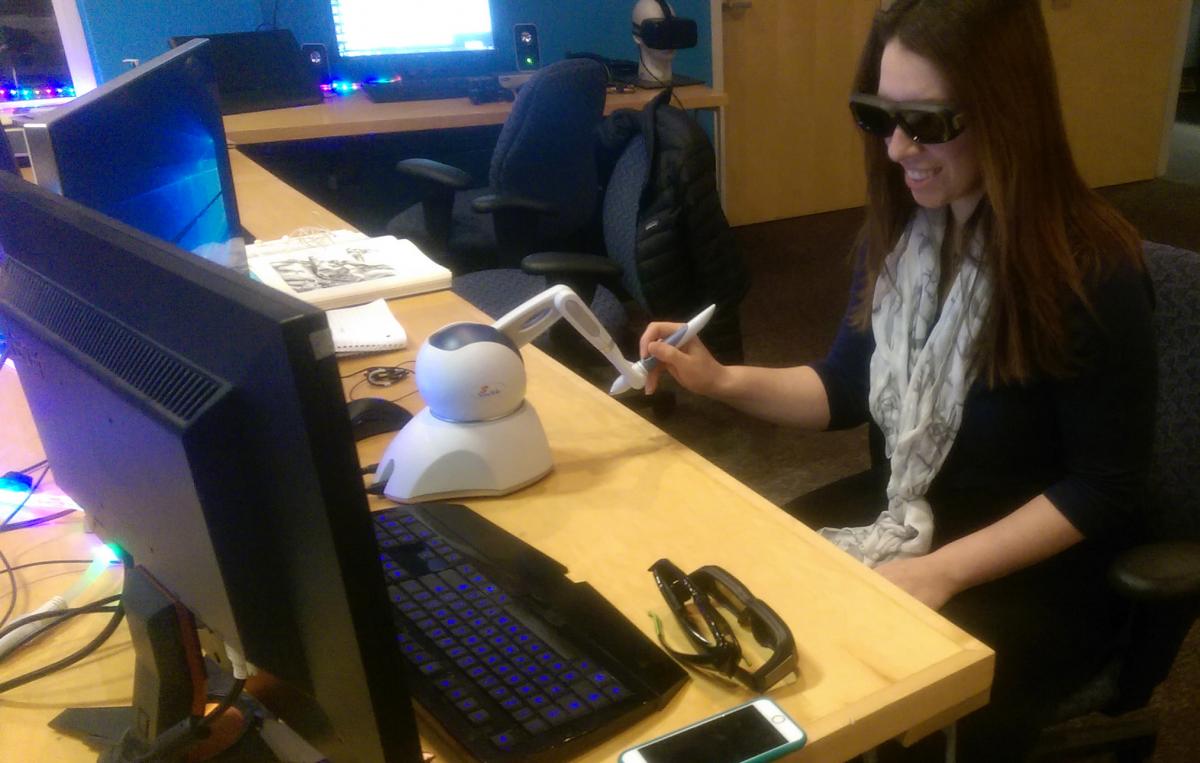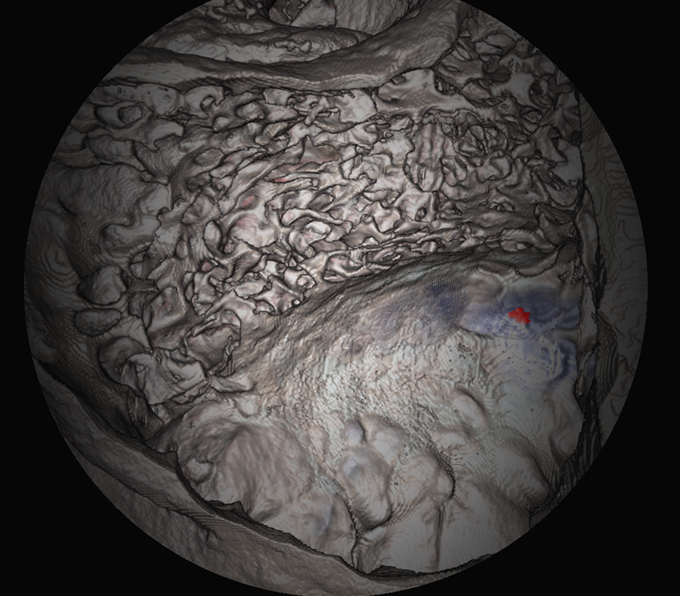Editor’s note: This is the second in a series of three blog installments about the Interface Lab at the Ohio Supercomputer Center.
I recently spent an afternoon tinkering around in the Ohio Supercomputer Center’s Interface Lab. What felt to me like a mind-opening trip to a video-game playground is a hub of innovation and groundbreaking discovery for computer and medical scientists. During its more than 30 years of research, the award-winning Interface Lab has provided resources and demonstrations to government, industry and academia. Below is the second of a three-part series on my visit to the lab. Read the first installment of this blog series on virtual home health care training here.

If navigating through a house made of pixels felt real, what was coming next was nothing short of unbelievable: I was going to perform surgery on the temporal bone, the part of the cranium that houses the ear structures. This surgery is performed to remedy issues related to the inner ear, such as severe vertigo and chronic ear infections and also is used to place cochlear implants for those with severe hearing loss.
I sat in front of a monitor and grasped my “drill” — a pen-like instrument that was attached to a desktop robotic device. The 3-D depiction of the temporal bone was impressive, especially coupled with the whine of the drill as I gave it a few practice revs. What took it to another level was the third sense the simulation brought in: touch. I jumped as I tapped the tip of the drill to the bone on the screen. Not only could I feel the rugged exterior of bone under the drill, but also resistance; I quickly learned how much pressure to apply as I drilled through and explored the curvature of the bone. The simulation also allowed me to change instruments, providing an irrigation tool to flush out the random orifices I had bored in the unfortunate virtual subject.
For otolaryngologists who actually know what they’re doing when handed a burr drill, the Virtual Temporal Bone surgery simulation system is a unique, cost-effective training tool, funded for over 12 years by the National Institutes of Health.

Don Stredney, director of the Interface Lab, along with experts at Nationwide Children’s Hospital, The Ohio State University and 13 other institutions across the country, have created and refined the tool that can supplement training on cadavers – on which students receive limited practice – with a safe, accessible method. In fact, two surgeons recently traveled to Nicaragua to train residents on temporal bone dissection with the virtual tool. The system received the prestigious Dr. Frank H. Netter Award for Special Contributions to Medical Education from the Vesalius Trust for Visual Communication in Health Sciences in 2008.
The Interface Lab provides access to unique equipment as well as expert advice and training for those who lack expertise or funding to facilitate training on their own. Stredney emphasized there is a movement in the medical field to improve training techniques and facilitate synergy in education. Without virtual simulation, students would normally hone their surgery techniques on cadavers and through assistantships in the operating room. These can be costly, time-draining and, in some cases, risky methods.
“The tools that we have for learning are inadequate, specifically for collaboration,” Stredney said.
The Interface Lab group hopes to improve access to collaborative tools, like those from the Virtual Temporal Bone surgery simulation through cost-effective resources. Many up-and-coming surgeons grew up playing video games – the simulation is an effective training tool for these medical students to bridge the gap between the textbook and the operating room.
Follow us on Twitter, Facebook and LinkedIn for updates on this and more OSC projects.

